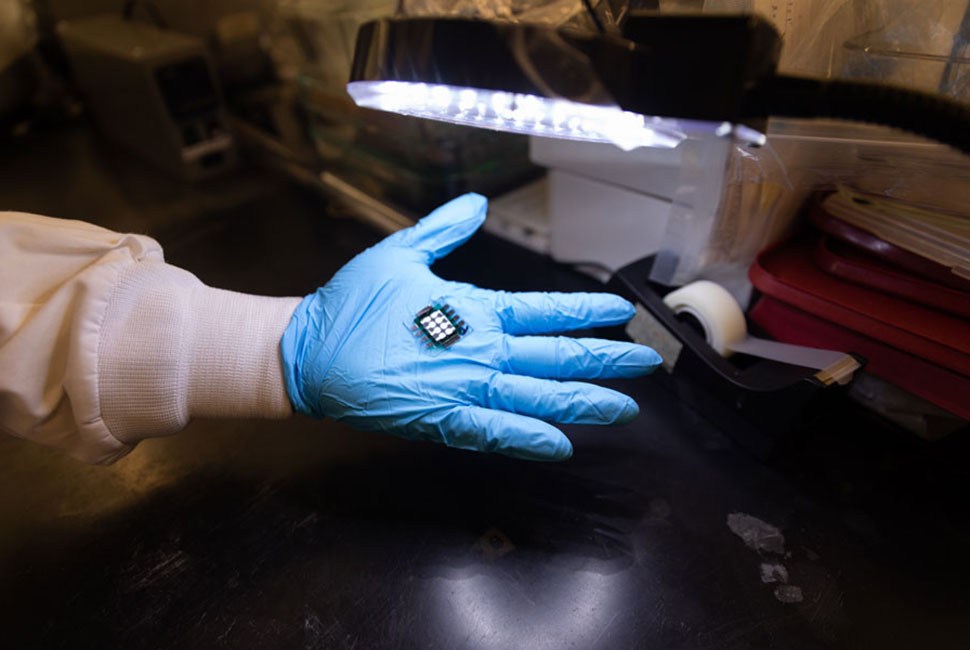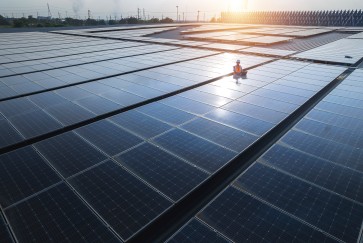Northwestern University researchers have raised the standards again for perovskite solar cells with a new development that helped the emerging technology hit new records for efficiency.
The findings, published in the journal Science, describe a dual-molecule solution to overcoming losses in efficiency as sunlight is converted to energy. By incorporating first, a molecule to address something called surface recombination, in which electrons are lost when they are trapped by defects — missing atoms on the surface, and a second molecule to disrupt recombination at the interface between layers, the team achieved a National Renewable Energy Lab (NREL) certified efficiency of 25.1% where earlier approaches reached efficiencies of just 24.09%.
“Perovskite solar technology is moving fast, and the emphasis of research and development is shifting from the bulk absorber to the interfaces,” said Northwestern professor Ted Sargent. “This is the critical point to further improve efficiency and stability and bring us closer to this promising route to ever-more-efficient solar harvesting.”
Sargent is the co-executive director of the Paula M. Trienens Institute for Sustainability and Energy (formerly ISEN) and a multidisciplinary researcher in materials chemistry and energy systems, with appointments in the department of chemistry in the Weinberg College of Arts and Sciences and the department of electrical and computer engineering in the McCormick School of Engineering.
Conventional solar cells are made of high-purity silicon wafers that are energy-intensive to produce and can only absorb a fixed range of the solar spectrum.
Perovskite materials whose size and composition can be adjusted to “tune” the wavelengths of light they absorb, making them a favorable and potentially lower-cost, high-efficiency emerging tandem technology.
Historically perovskite solar cells have been plagued by challenges to improve efficiency because of their relative instability. Over the past few years, advances from Sargent’s lab and others have brought the efficiency of perovskite solar cells to within the same range as what is achievable with silicon.
In the present research, rather than trying to help the cell absorb more sunlight, the team focused on the issue of maintaining and retaining generated electrons to increase efficiency. When the perovskite layer contacts the electron transport layer of the cell, electrons move from one to the other. But the electron can move back outward and fill, or “recombine” with holes that exist on the perovskite layer.
“Recombination at the interface is complex,” said first author Cheng Liu, a postdoctoral student in the Sargent lab, which is co-supervised by the Charles E. and Emma H. Morrison Professor of Chemistry Mercouri Kanatzidis. “It’s very difficult to use one type of molecule to address complex recombination and retain electrons, so we considered what combination of molecules we could use to more comprehensively solve the problem.”
Past research from Sargent’s team has found evidence that one molecule, PDAI2, does a good job at solving interface recombination. Next they needed to find a molecule that would work to repair surface defects and prevent electrons from recombining with them.
By finding the mechanism that would allow PDAI2 to work with a secondary molecule, the team narrowed in on sulfur, which could replace carbon groups — typically poor at preventing electrons from moving — to cover missing atoms and suppress recombination.
"In addressing the core inefficiencies found in inverted perovskite solar cells, which are predominantly due to nonradiative recombination losses, a new standard in solar cell efficiency is being set," said Northwestern professor Mercouri Kanatzidis. "This is a prime illustration of how the field of advanced materials chemistry can significantly enhance the energy conversion efficiency and longevity of emerging perovskite photovoltaic technologies."
Kanatzidis is a leading authority in the field of materials chemistry and sustainable energy solutions, with dual appointments in Weinberg’s department of chemistry and McCormick’s department of materials science and engineering.
"We are excited that our bimolecular strategy shows applicability to a range of perovskite compositions, including those that are promising for tandem solar cells," said Bin Chen, research assistant professor of chemistry and a co-author on the paper.
A recent paper by the same group published in Nature developed a coating for the substrate beneath the perovskite layer to help the cell work at a higher temperature for a longer period. This solution, according to Liu, can work in tandem with the findings within the Science paper.
While the team hopes their findings will encourage the larger scientific community to continue moving the work forward, they too will be working on follow-ups.
“We have to use a more flexible strategy to solve the complex interface problem,” Cheng said. “We can’t only use one kind of molecule, as people previously did. We use two molecules to solve two kinds of recombination, but we are sure there’s more kinds of defect-related recombination at the interface. We need to try to use more molecules to come together and make sure all molecules work together without destroying each other’s functions.”


